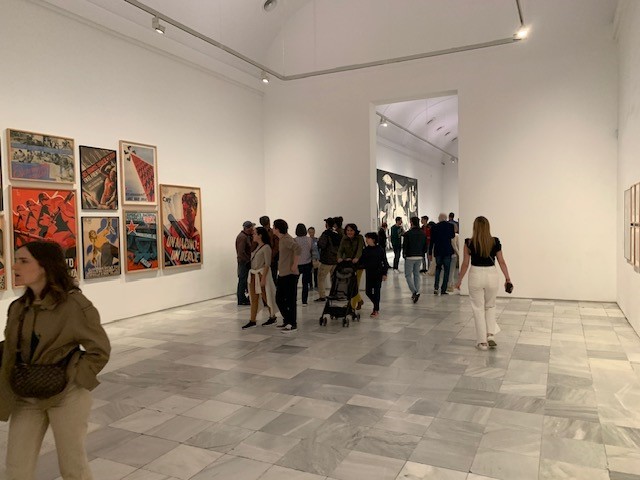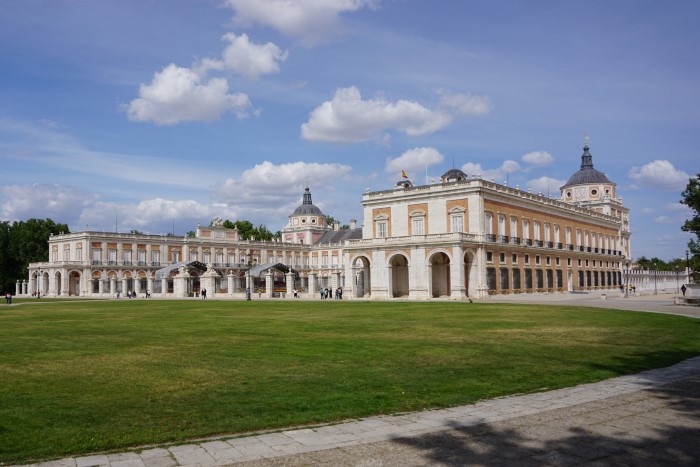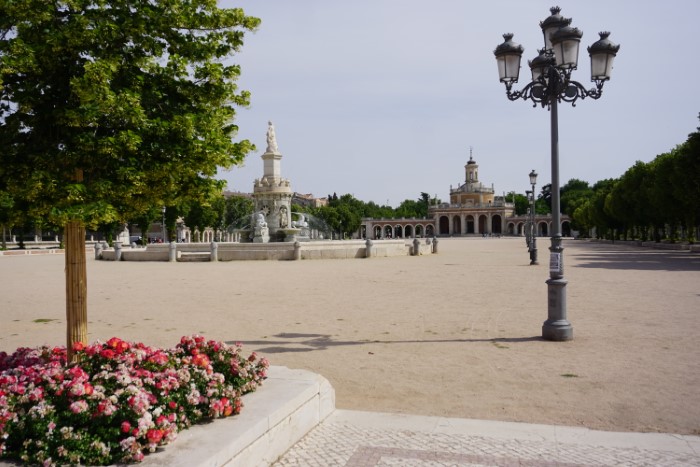Right from the start of our holiday Denise said that she would dearly like to visit the Reina Sofia and Prado Galleries in Madrid, but as we couldn’t find any campsites in the city and really didn’t want to take the van there, we decided to stay for a few nights in Aranjuez (about 50 kilometres south of the capital) and let the train take the strain.
We stayed the night prior to Aranjuez at a camperstop at Aldeanueva de Barbarroya, which is just to the south of the Embalse de Azutan (Azutan Reservoir). With just enough space for two vans it wasn’t the largest site we’ve visited, but with a bar in easy walking distance it met our needs extremely well. Whilst enjoying a beer we got talking to three Belgians who had cycled from somewhere in Portugal and were intending to pedal their way all the way home to Belgium. 3,000 km – completely bonkers!
We always enjoy using the train services in the countries we visit and the 40 minute trip from Aranjuez to the Atocha station in Madrid didn’t disappoint. Clean, comfortable, on-time and at eight pounds a head for the return journey, what’s not to like?
Fortunately both the galleries are within easy walking distance of the station. We started with the Reina Sofia which has an outstanding collection of modern art, including works by Dali and, of course, Picasso. I’ll be the first to admit that I’m not a great fan of most modern art, but their coverage of the Spanish Civil War period was interesting. The star of the show was Picasso’s Guernica, which was way beyond my understanding.
 The Prado was equally impressive, though I’m afraid that after the first few hundred paintings my ability to appreciate each and every masterpiece starts to wane – and the Prado has thousands. Call me a philistine – and you’d be right.
The Prado was equally impressive, though I’m afraid that after the first few hundred paintings my ability to appreciate each and every masterpiece starts to wane – and the Prado has thousands. Call me a philistine – and you’d be right.
Aranjuez is yet another place that we’d visited previously, though this time we could at least remember our fleeting visit back in 2003. As a ‘royal city’ the architecture is predictably impressive – apparently until 1752 only people with royal connections were allowed to live in the city – which may account for the fact that there are no well-preserved slums.

